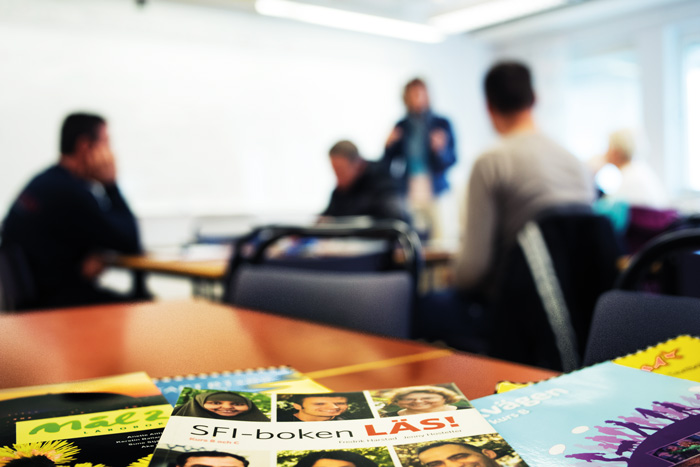
International students coming to Lund often want to learn Swedish, especially those enrolled in a masters program. The road to fluency, however, can be long, as the university’s beginner level courses are only open to exchange students.
When Estonian student Liina Paju came to Lund in August 2014 to study a two-year cognitive semiotics program, she was very motivated to learn Swedish. As soon as she could, she signed up for SFI, Swedish for Immigrants; a course that is offered by the Swedish state at Komvux for all immigrants staying in Sweden for more than one year. For Liina Paju, the beginning was smooth:
“I received my personal number within three weeks and applied for SFI onsite. I received an answer in October and went to my first classes in November.”
Because of Liina’s previous knowledge of Swedish, the course at the highest (D) level was no real challenge and she passed the exam in early December. She then applied for the next level, Gymnasienivå, which she couldn’t start before April because of Komvux’s schedule.
“The course that I started then was good and the teacher was great,” Liina Paju remembers. “But it was only once a week, which was not enough to take any big steps forward.”
Veronika Kormann, a European business law major from Germany, has had similar experiences. Arriving in Sweden last fall, she started SFI with some self-taught knowledge of Swedish. After passing the national exam, Veronika Kormann applied for the higher level course as well, and now – four months later – she can finally start with “a class that will challenge me,” she says.
The system seems paradoxical since it is “especially the master students who would often like to stay in Sweden after their degrees to work here”, yet they are the ones who get no direct help from the university, Veronika Kormann criticizes. Liina Paju also wonders why exchange students can get into swedish classes that easily:
“We are after all the ones staying here longer and could really benefit from learning the language.”
Lena Larsson, Director of studies of Scandinavian languages at LU, explains that there is a historical reason for why the University only offers beginner courses to exchange students.
When many exchange students started to arrive about fifteen years ago, Swedish courses were organized primarily for them. When MA students came in large groups a few years later, the course curriculum still stated that the language courses were only open for exchange students.
“This never changed, and the department only gets money to teach Swedish to a certain amount of students,” Lena Larsson explains.
“To open courses for master students would mean that we have to cancel other courses. We decided not to do that, because most master students stay for two years and they can study at Komvux. The students coming for a one year master program are the ones who really don’t get anything, which is sad.”
Lena Larsson understands that the procedure of getting into the right level of SFI can be long, compared to university classes that start immediately:
“But that is really not up to us, that’s Komvux. Really, I’d love to be able to teach master students, but we don’t have the funding for it.”
Only if students are allowed by their faculty to include Swedish in their program, and their program stands for the costs, an exception can be made. Right now, LTH has such a construction for some of its master students.
Liina Paju eventually dropped out of the Swedish classes. After the summer break, she felt that she had too many other responsibilities.
“You can’t only blame the University for the lack of courses. It was my own decision to take a break and there are no good excuses to quit. But the missing input in the beginning decreased my motivation, which was very high at first.”
Veronika Kormann, too, warns that “not everyone has the energy to fight the system. You get the feeling that you have to work very hard to even have a chance at learning Swedish at all.”
Article: paula dubbink & Katherina Riesner
How to learn Swedish as a non-exchange students:
> Visit language cafes: the one at SOL and the one organized by Individuell Människohjälp
> Pay for classes at Folkuniversitet
> Look into Swedish courses at Malmö Högskola
> Take the intensive Swedish as a Foreign Language course at LU after your master – 60 ECTS in one year
> Take level 5-8 (advanced courses) at LU during one semester, if you have a good basic level
> Take the free online course of the Swedish Institute






